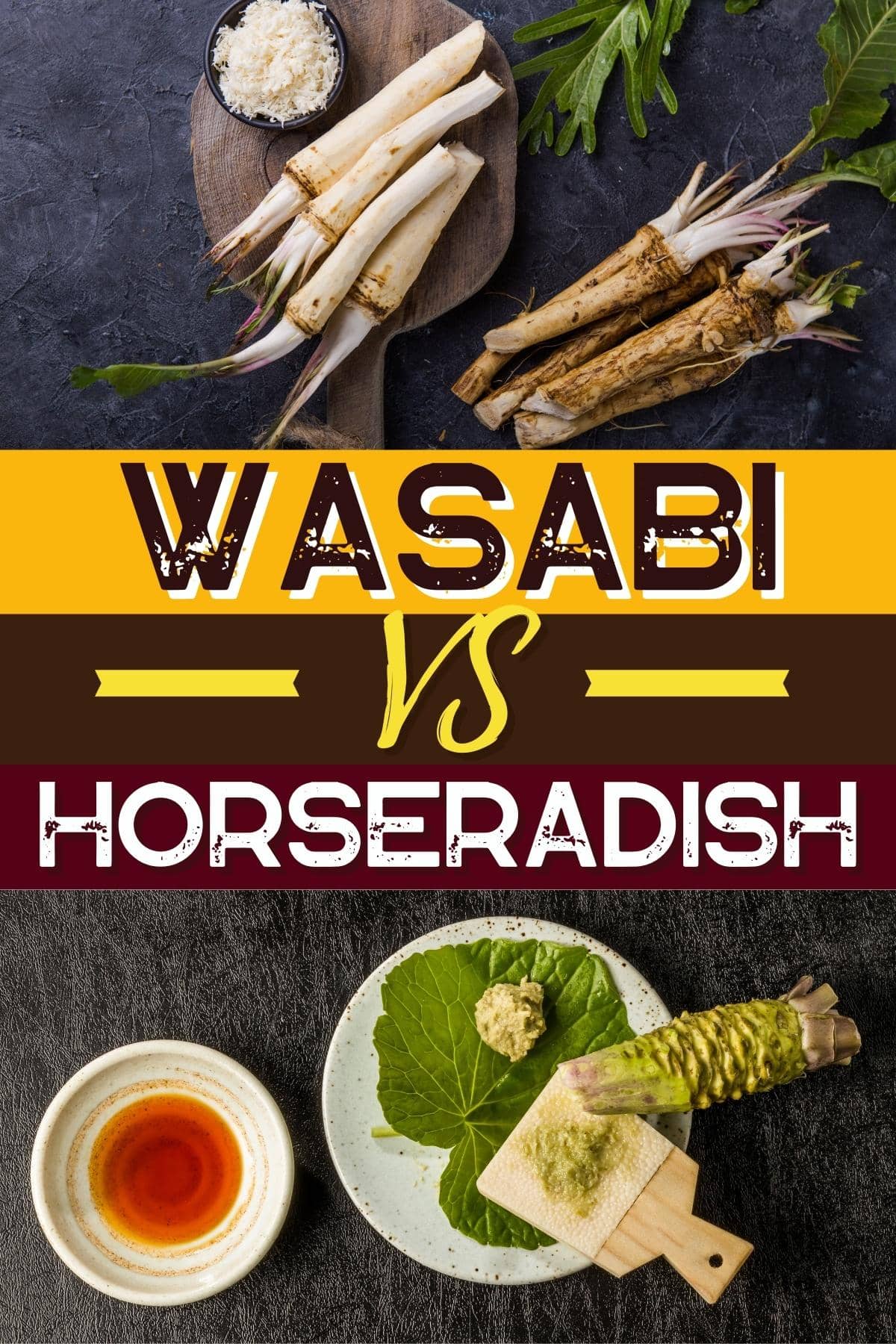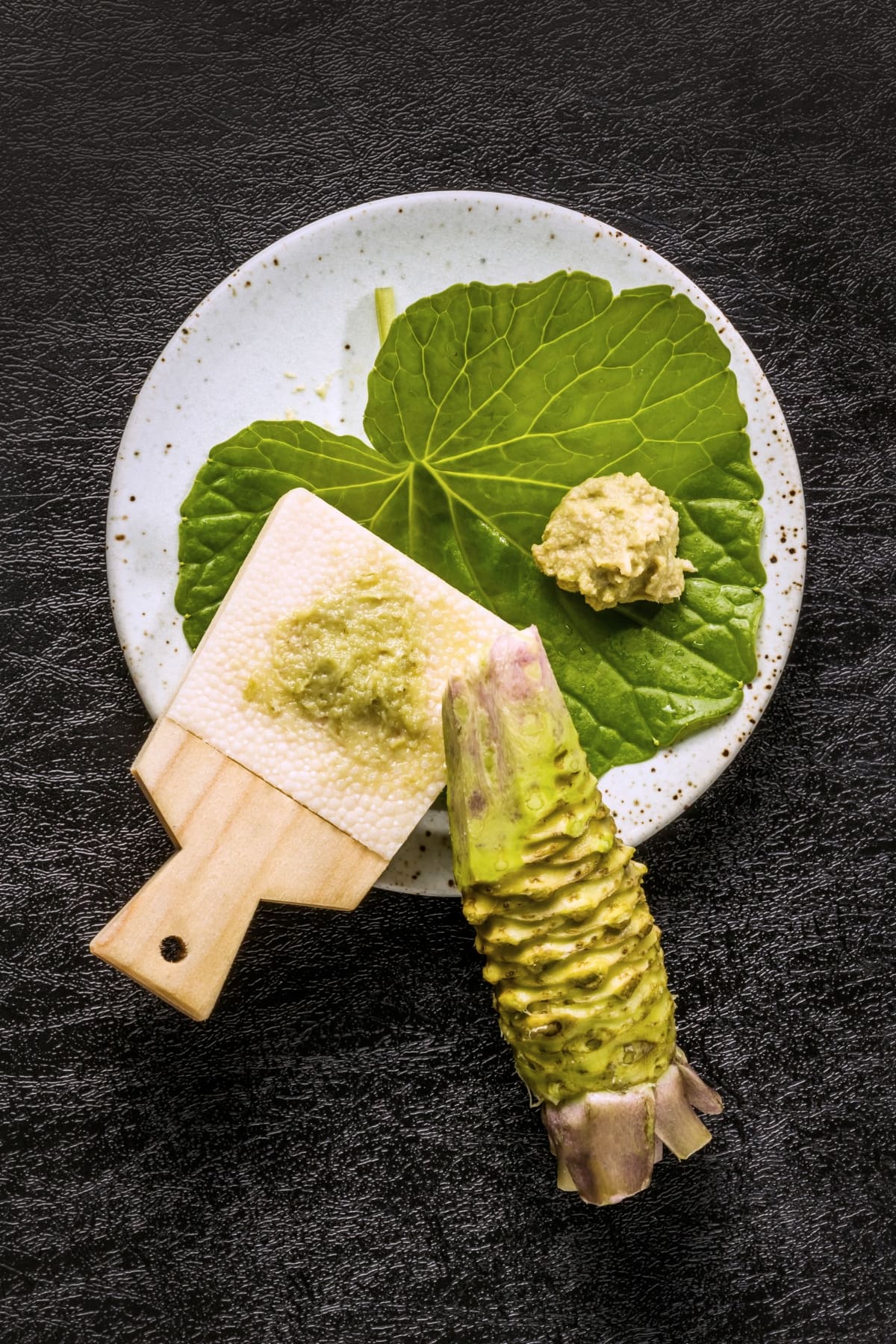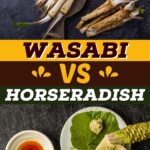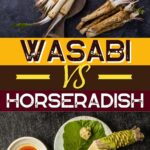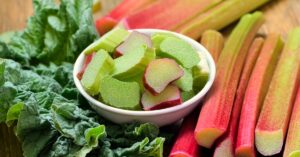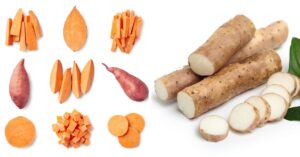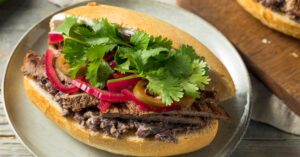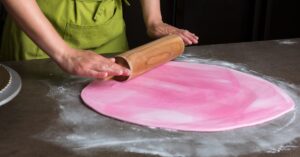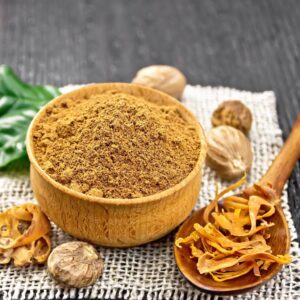Is wasabi just horseradish in disguise? What’s the difference between wasabi vs. horseradish anyway?
From their origins to uses, I’ll clarify the distinctions. So you can finally have all the answers you seek.

These two spicy condiments are beloved. But for different things.
Wasabi adds a sinus-clearing kick to enhance your sushi. Horseradish balances fatty roast beef sharply and deliciously.
But these differences are merely the start.
Let’s dive deeper into the four main distinctions between wasabi and horseradish.
Also, I’ll let you in on a little secret on how to spot fake wasabi.
Wasabi vs. Horseradish (What’s the Difference?)
Wasabi and horseradish are in the same family, but that doesn’t make them the same!
Everything from their origin to their uses is different. So let’s take a closer look so you can tell them apart.
Classification and Origins
Wasabi and horseradish are both in the Brassicaceae family. But they’re two different species of plant.
The scientific name for wasabi is Eutrema japonicum. It’s native to Japan, where it grows in stream beds.
The oldest account of its existence dates to the 8th century AD!
Horseradish is from Western Asia and Southeastern Europe. It comes from a perennial plant called Armoracia rusticana.
Appearance
Horseradish root is white with brown skin and a tapered shape.
The bright green leaves resemble those of the dock plant. Many don’t realize the greens are edible too.
The wasabi rhizome is pale green. The heart-shaped leaves are flat and wide, like a lily pad.
Flavor and Heat
Both are spicy and biting- but to different degrees.
Wasabi has a more complex flavor with floral notes and hints of sweetness. It contains more of those sinus-clearing volatile compounds.
So it’s hotter, too.
Horseradish is also pungent but not as complex. It’s less spicy than wasabi, but the heat lingers longer.
Culinary Uses
Horseradish and wasabi are both a spice and a condiment. But what you use them for differs.
Wasabi typically accompanies sushi. Horseradish, too, but only in fake wasabi form.
The uses for wasabi don’t end there, though. You can find it in mashed potatoes, sauces, dips, and ice cream!
When it’s not in disguise, horseradish is a common condiment for meat and seafood.
Some popular uses for horseradish include sandwich spreads, dips, and sauces.
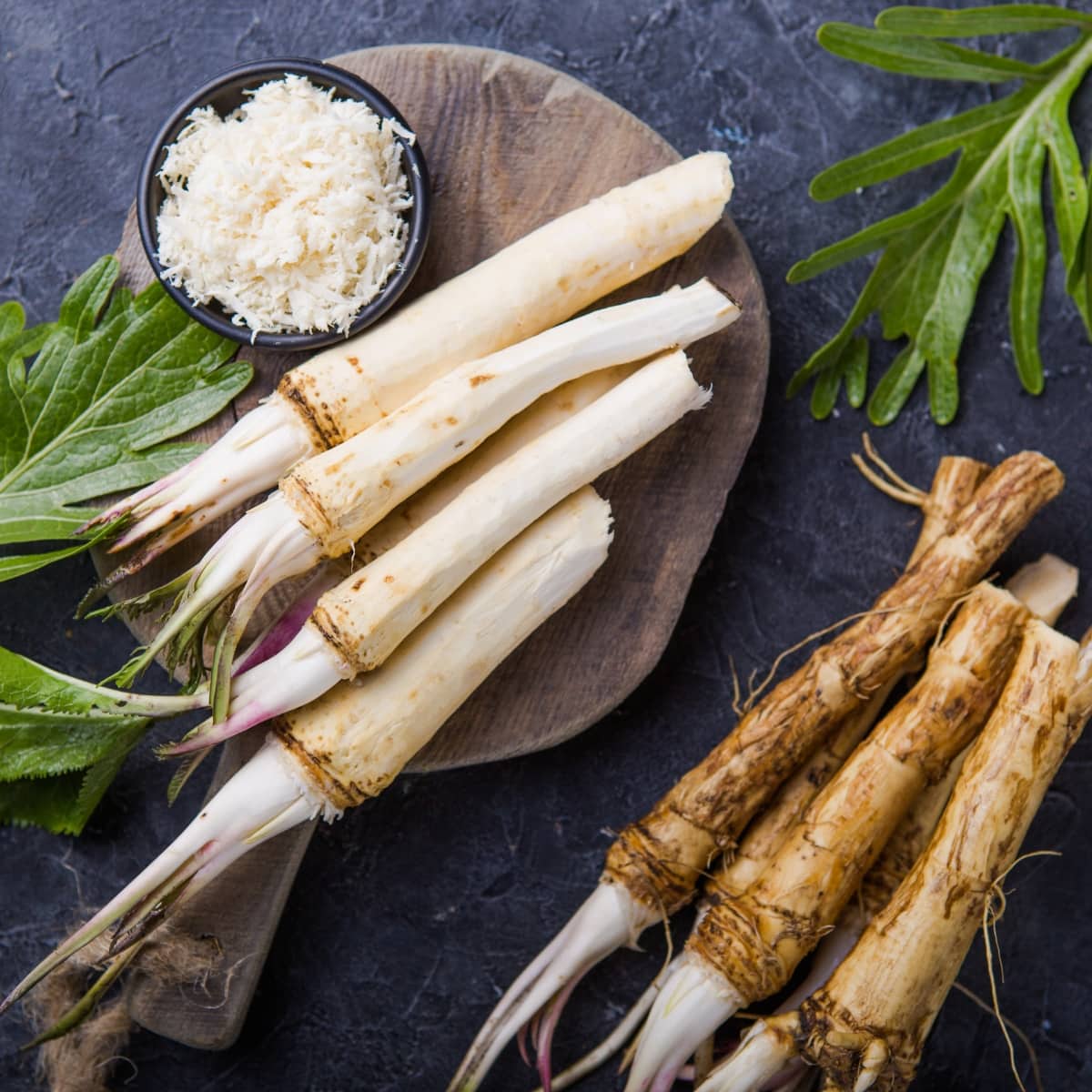
What Is Horseradish?
Horseradish is the edible root of the Armoracia rusticana plant. This vegetable has an intense, spicy, and biting flavor.
Part of the Brassica family, horseradish is a relative of mustard, cauliflower, and broccoli. And yes, it’s a relative of wasabi too!
You can find it sold as a paste and ground. So you can use it as a spice or as a condiment.
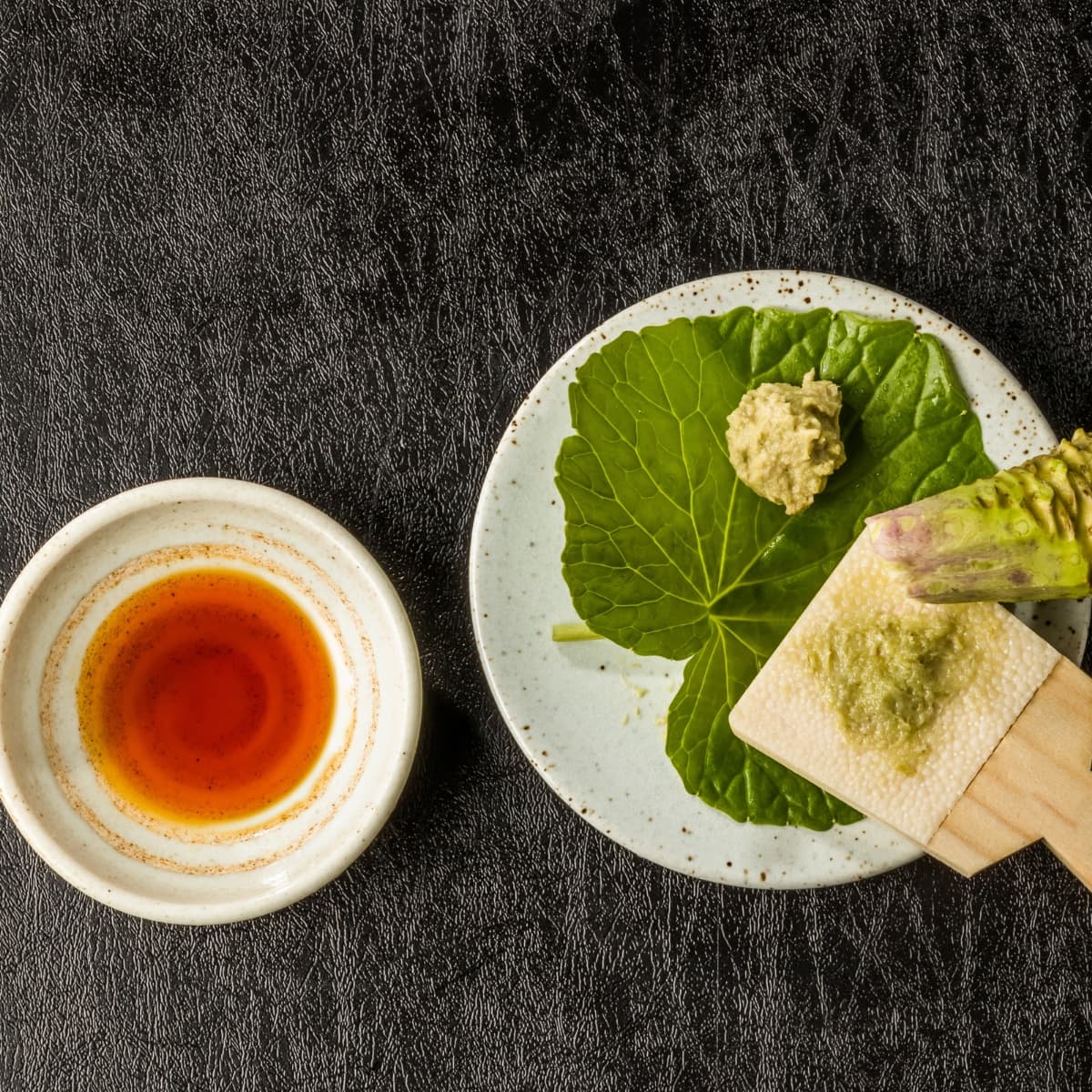
What Is Wasabi?
Wasabi is the rhizome of the Eutrema japonicum plant.Native to Japan, it thrives in stream beds. And it is hard to grow.
Like horseradish, wasabi is pungent and spicy. And yet, the heat dissipates quickly.
For this reason, it’s a great addition to sushi. It enhances the flavor of the fish rather than overpowering it.
Wasabi is also complex. It’s bright, fragrant, slightly sweet, and has a hint of green.
Fake wasabi is much more common because real wasabi is an expensive crop.
Why Is Real Wasabi So Expensive?
Real wasabi is hard to find. And when you do finally find it, it’ll cost you a pretty penny.
The reason it’s expensive is that it’s hard to grow.
Wasabi only grows in a particular microclimate, requiring specific conditions. Having its stems partially submerged in running water is crucial.
Meeting its requirements is tricky. And it can take three years to mature. So, producing wasabi on a commercial scale is challenging and costly.
How to Tell Real and Fake Wasabi Apart
Wondering whether that dollop of wasabi next to your sushi is legit? There’s one way to tell- look at the texture.
Real wasabi has a gritty, grated texture. Fake wasabi is thick with a paste-like consistency.
Unlike fake stuff, real wasabi is also very hard to find. So I’m sorry to report the substance you think is wasabi is probably fake.
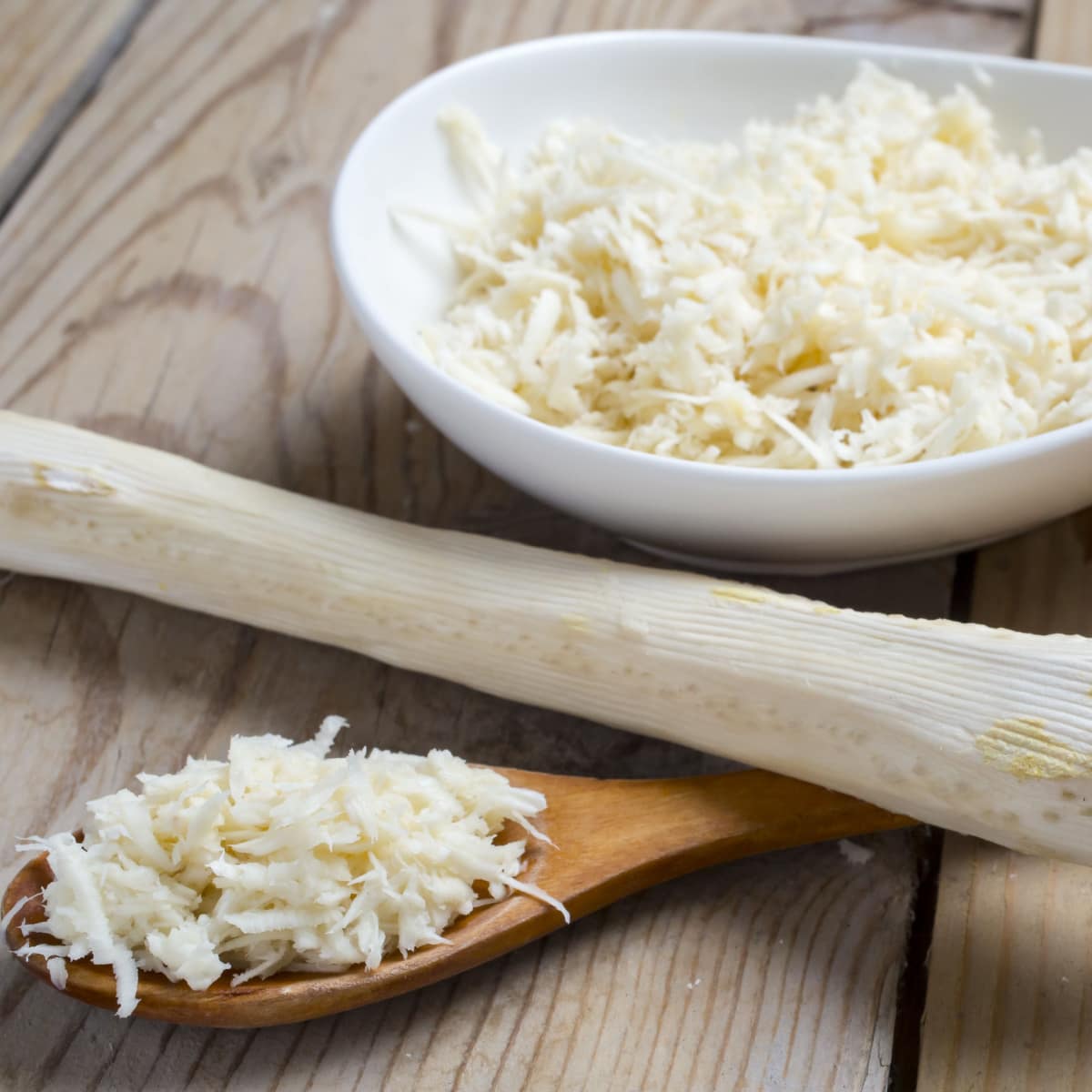
Where to Buy Horseradish and Wasabi
Major grocery store chains and specialty stores carry horseradish in paste form.
For fresh horseradish, look for it in the produce section from September to April. Odds are you’ll also find it at a farmer’s market.
Wasabi is much, much harder to find. Your best bet is buying wasabi online.
There are some farms in the Pacific Northwest and California growing wasabi. A great company is Oregon Coast Wasabi.
Many sell their products online but check their websites for shipping details.
How to Store Horseradish and Wasabi
Keep fresh horseradish and wasabi in the refrigerator.
It’s best to wrap both in plastic and stash them in the crisper drawer. They should last up to four weeks.
Likewise, jarred horseradish and wasabi require refrigeration once opened.
Also, don’t grate them either until you’re ready to use them. This helps to preserve the quality and that powerful punch.
